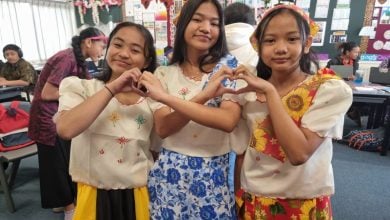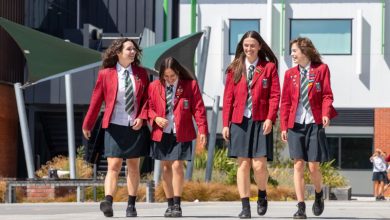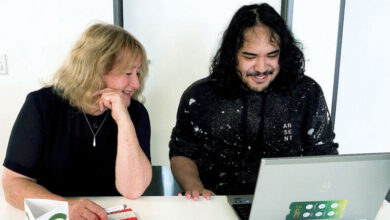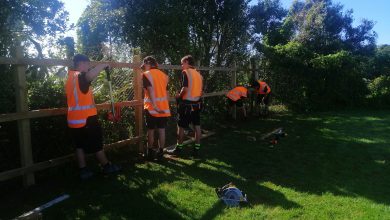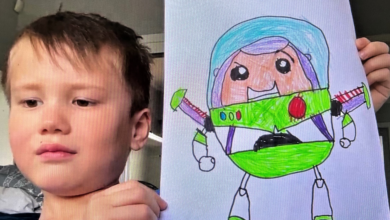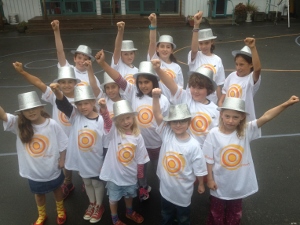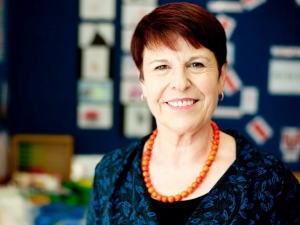Students drive sustainability at Stanmore Bay School
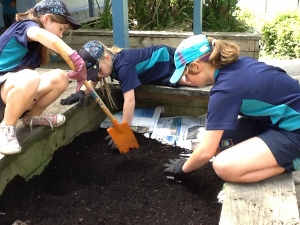
 Stanmore Bay School on the Hibiscus Coast north of Auckland is a primary school with a current roll of 482, ranging from new entrants to year 6.
Stanmore Bay School on the Hibiscus Coast north of Auckland is a primary school with a current roll of 482, ranging from new entrants to year 6.
The school was established in 1979 to cater for the growing population in the area, and five years ago it became an Enviroschool.
Teacher Robyn Bennett says the school was already part of the Travelwise initiative, which encourages sustainable transport to and from school, and as an extension of that, the decision was made to place greater emphasis on environmental sustainability.
“We are a Gold Travelwise school, and this concept goes hand in hand with the Enviroschool ethos, Miss Bennett says.
In becoming an Enviroschool, Stanmore Bay would foster environmental awareness among the pupils, with its Enviro Group becoming the major focus of environmental-based activities, she says.
“That’s the way we wanted to go – we wanted the children to have more respect for the environment and to have the environmental practices they undertake at school become even more entrenched in their everyday lives. If we instill good practices in them now, they will carry those through as they grow up.”
 Teachers Linda McPhail and Nicola Dunphy oversee the Enviroschool programme at Stanmore Bay School, and are fully committed to it. The Enviro group has representatives or Nature Nurturers in all of the school’s 22 classes and these students also take their role very seriously, Miss Bennett says.
Teachers Linda McPhail and Nicola Dunphy oversee the Enviroschool programme at Stanmore Bay School, and are fully committed to it. The Enviro group has representatives or Nature Nurturers in all of the school’s 22 classes and these students also take their role very seriously, Miss Bennett says.
“The representatives don’t apply for the role. They are nominated by their teachers, who choose students they see as being passionate and willing to take on the task with enthusiasm and commitment. That works quite well. Every class has a ‘future greenie’ who wants to save the world.”
While the teachers act as facilitators, the initiative is very much student-driven, Miss Bennett says. The Nature Nurturers meet once a week to discuss their activities and plan and implement new ones. They also report to their class about what they are doing, provide information on the Enviroschools programme, and encourage their classmates to play their part in caring for the environment.
From the beginning, one of the main activities has been recycling waste food and creating compost. However, this process is now being managed more effectively with the recent installation of a purpose-built worm shed. Year 3 and 4 students distribute and collect the classroom bins of waste each day. To make sure the worms can do their job effectively, these students produced colourful posters for each classroom, showing what is good and what isn’t good for the worms.
Another related activity, which is helping the students get to know how food is grown and how to care for plants, is the lunchtime garden club. Teacher aide/gardener Linda Westbrooke runs the club and all students are welcome to get their hands dirty in the vegetable and flower gardens and learn valuable skills as they go.
The school has received a grant to purchase fruit trees and an orchard is now being established. The brown milk cartons from the Milk in Schools programme, which Stanmore Bay is part of, are recycled and were used as a weed mat for the orchard before the Enviro Group members laid the mulch.
“By being involved in creating the orchard the students are more likely to care for it,” Miss Bennett says. “In the future, as the trees mature, we hope students will be able to pick and eat the fruit grown there.”
 One of the main focuses for this year has been waste reduction at the school. Students are encouraged to take any packets or other paper waste home, rather than filling up the bins at school. Aligned to this is paper recycling, which is done weekly. To reduce the amount of paper used, students and staff are encouraged to use both sides of the paper before it goes into the recycling bin. Students collect the paper recycling bins and empty them into a bin provided by the local council.
One of the main focuses for this year has been waste reduction at the school. Students are encouraged to take any packets or other paper waste home, rather than filling up the bins at school. Aligned to this is paper recycling, which is done weekly. To reduce the amount of paper used, students and staff are encouraged to use both sides of the paper before it goes into the recycling bin. Students collect the paper recycling bins and empty them into a bin provided by the local council.
Saving energy is seen as an important aspect of being an Enviroschool, and to this end solar panels have been installed on top of one of the classrooms. These help heat the swimming pool, reducing the school’s energy costs, while students and staff are also encouraged to switch off electrical devices that are not being used.
In a past project to raise environmental awareness at the school, students painted sea creatures on the school’s drains to remind everyone that whatever goes down the drain goes out to sea. Every class visited these and the students learnt why it is important to know what happens to the rubbish that goes down the drain.
Perhaps the most innovative recycling project at the school was initiated last year, and is quite possibly the first of its kind at any New Zealand school, Miss Bennett says. It is the PETS Green Wall, a four-metre by two-metre concrete wall that has been transformed into a vertical hydroponic garden where both native and exotic species, including epiphytes and edible plants, grow and flourish.
To create this living wall, students and teachers collected plastic bottles to be used as planters. Six hundred bottles were collected, and then over two days, students, family and community members attached 460 of them to wire frames to form the structure, which was then fastened to the wall.
The main sponsors of the project, Natural Habitats, were part of it from the start, and installed an irrigation system to keep the plants alive. All those involved see vertical gardens as an answer to the ever-increasing spread of urbanisation, providing essential ecosystems in the landscape without taking up too much room, Miss Bennett says.
“The wall has become a talking point with everyone. Many feel that a project like this is a great way to combine sustainable technology with an environmentally sound ethos.”
 For school principal Carol Abley, the PETS Green Wall is another way the school has added to its plan to “fully embrace a sustainable future”.
For school principal Carol Abley, the PETS Green Wall is another way the school has added to its plan to “fully embrace a sustainable future”.
“To turn so many bottles into a garden feature is amazing,” she says.
Over recent weeks, the presence of a clothing bin located outside the school gates has turned the students’ attention to the problem of dumping.
“People think that because the clothing bin is there they can dump rubbish beside it, which is creating an eyesore,” Miss Bennett says.
“Room 15, a year 6 class, wrote a play about it and presented it in assembly to remind everyone that it’s not right to dump rubbish like that. There is also a competition being run by two students to design a sign to be placed at the school gate to tell people to stop dumping rubbish next to the clothing bin. This is one of the best examples of a student-driven initiative that I have seen.”
Miss Bennett and her colleagues at Stanmore Bay School are thrilled with how the students have got behind the Enviroschool initiatives over the last five years, and want to build on it.
“We’re not quite there yet. It is an ongoing project,” she says.
“We see teachers and students as having an equal responsibility to develop an Enviroschool that we have pride in, and have hope for our future. While we have been implementing many aspects of the Enviroschool ethos into our school, we are now exploring the option of using a total, whole-school concept curriculum with a strong focus on sustainability for 2015.
“What this would mean is that every student at our school would be learning simultaneously, and deepening their understanding of what sustainability is and what their responsibilities are to ensure and maintain this idea for life.
“This would empower them to make informed decisions that will impact positively on their future. Our hope is that the children will continue to transfer this knowledge back to their homes and community.
“As our school motto says, ‘The sky’s the limit’.”

